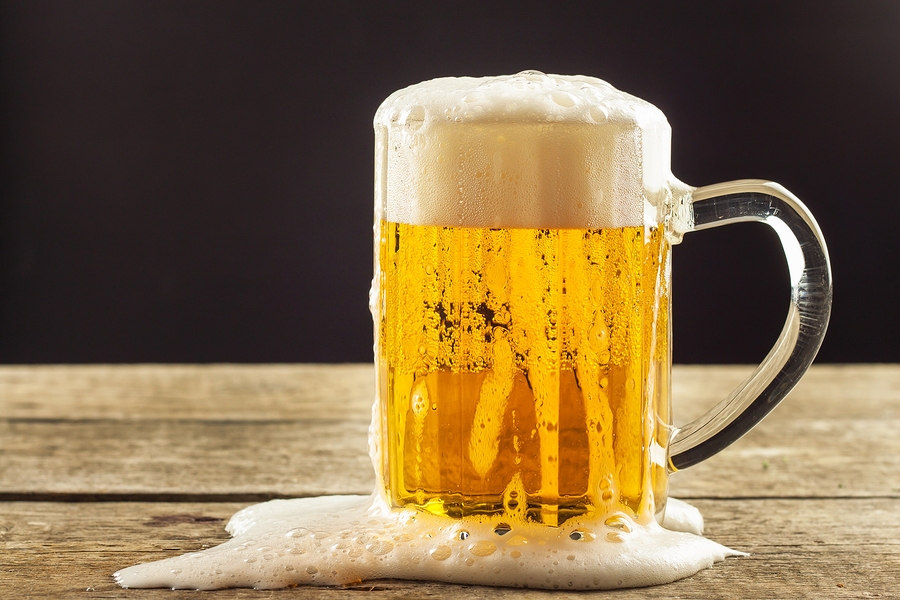Here’s a solid refresher for those of you who might’ve forgotten about this one little factoid. In 2013, Newscorp Australia made a dazzling report that states that it would be cheaper for Australians to fly out to United States, buy Adobe software over there and fly back to Australia than to actually buy the same software here in Australia. The Australia Tax, a not-so playful term applied at the generally higher cost of goods here in Australia, would be funny if it wasn’t so depressing.
Having to pay more for image editing software and video games is tough but it’s still tolerable; but when alcohol is concerned, that’s when things get a little dicey. It’s not just that Australians are paying more for alcohol than most of the world thanks to taxes; it’s also because of how byzantine alcohol taxation is. Craft beers are booming all over the world but they’re actually somewhat struggling Down Under, having to deal with the complicated small business tax issue associated with alcohol.
Taxing under the influence
Trust me when I say that I’m not exaggerating that if six packs of 10% abv, or alcohol by volume, beer isn’t enough to give you a hangover, reading about beer taxes definitely will. Alcohol in Australia is subjected to 4 different tax regimes and two taxation modes. Beer, aside from probably being the most common form of alcohol also play hosts to the most complicated tax system, with eight different excise rates based on their abv.
Wine has its own arrangement as well and so do alcopops, spirits and brandy and this is all before we take into account the issue of GST, which is probably going to need another explanation of its own. Apologies again with the hyperbole but I’ve taken engineering classes back in my time at Uni that is far less complicated than this. To sum up, here’s a primer on how different types of alcohol are taxed in Australia.
Wine gets better with age, I get better with wine
Unlike other types of alcohol that are mostly taxed by their abv, aside from certain situations here and there, taxes for wine works under the separate system referred to as the Wine Equalisation System (WET). Mercifully, WET is as simple as it gets as all it does is add 29% extra to the wholesale price of the wine you’re buying. It’s still a mystery to me where the number 29% came from but at least you don’t have to be a rocket science to understand how it works.
What this basically means is that the pricier your taste in wine is, the more tax you’re going to have to pay. When it comes to wine, this system makes perfect sense, since wine can range from cheap, store-bought pinot noir priced around $10 a bottle to expensive specimens coming out of Yarra Valley priced at a cool $200 per bottle. The 29% extra is still quite a lot to deal with, mind you.
If you could guess from the name, the WET system was drawn up partially to help local wine producer. Under the scheme, it is possible for wine producers to claim up to $350,000, reduced from its original cap of $500,000 as long as you fulfill the required criteria. This scheme used to be taken advantaged by ‘virtual winemakers’ but the criteria has now been tightened so that wine producers are required to own at least 85% of the grape used for the winemaking process.
I liked beer. I still like beer

For those of you unaware with the concept of abv, it’s a measurement of how much the drink you’ve consumed is pure alcohol. A typical lager abv of 5% for example means that 5% of the total volume of that 330ml beer you just drink, or 16.5ml, is pure alcohol. The ATO basically divides beer into 3 categories, low alcohol beers have less than 3% abv, medium beers have an abv between 3% to 3.5% while anything over 3.5% abv is classified as full-strength beer.
The above categorisation only applies to packaged beer as several years ago, Australia’s bars and pubs successfully lobbied for a lower excise rate for beers that are served through taps but the difference itself is different for each category of the beer, which makes everything more complicated. The ATO has a guide on the whole schematic if you’re interested but to make things easier, here’s an illustration.
In the lager example above, we have 16.5ml of alcohol contained within a can of 330ml beer. The beer has an abv of 5% and since it’s a packaged beer, it’s hit with an excise rate of $49.50 per liter (1000ml) of alcohol. If you buy one can of that beer, you’re going to be hit with a tax of 16.5/1000 times 49.5, which is $0.81675. If you’re buying a case containing 24 of that beer, you’re going to have to pay a tax of $19.602, which is quite a lot actually.
Smells like expensive spirits, alcopops and brandy
Alcopops used to exist in a different circle compared to spirits in terms of taxes but that changed back in 2008 when the excise rate for pre-mixed alcoholic drinks, otherwise known as alcopops were brought up from $39.36 to $66.67, which was the excise rate for spirits back then. As of today, the excise rate for both stands in at a dizzying $83.84 per liter of alcohol. That rate is the same no matter the abv so yes; a can of UDL Pineapple Vodka with a 4% abv is taxed at the same rate as a bottle of Hennessy with a 40% abv.
Just for the sake of comparison, the excise rate for alcopops is close to twice as expensive as the excise rate as a typical lager despite a difference of 1% in abv, which is technically quite different if you’re drinking them. Brandies have their own excise rate of $78.30, which is applicable for all brandies. All alcohols are equal but some are definitely more equal than others.

